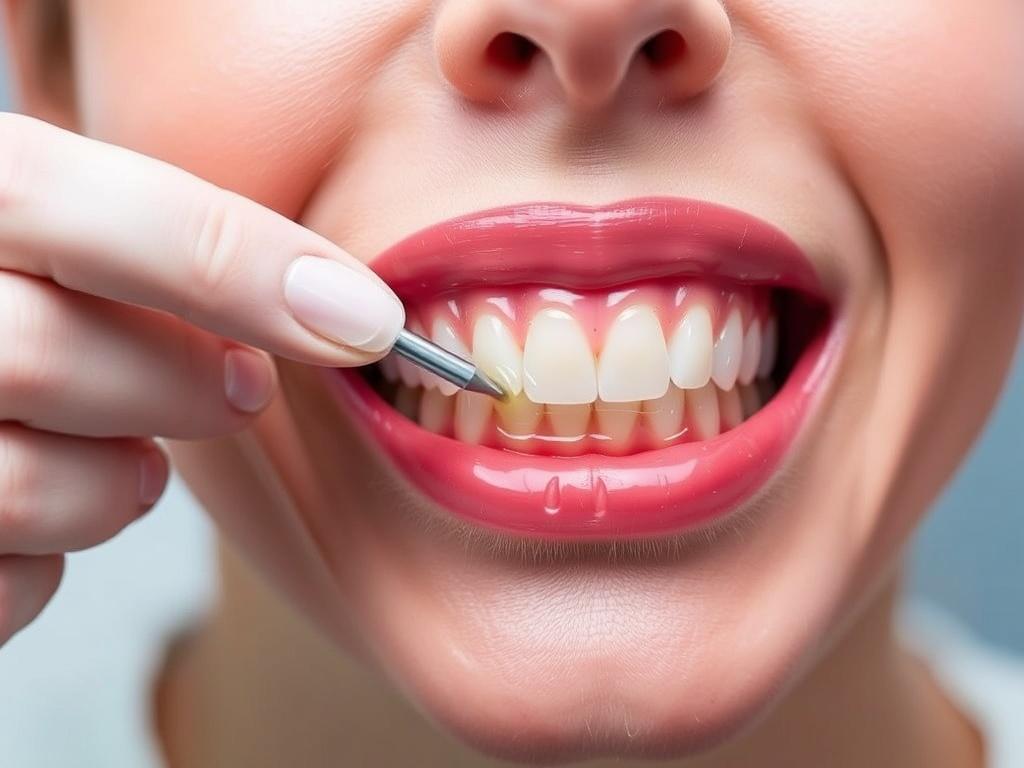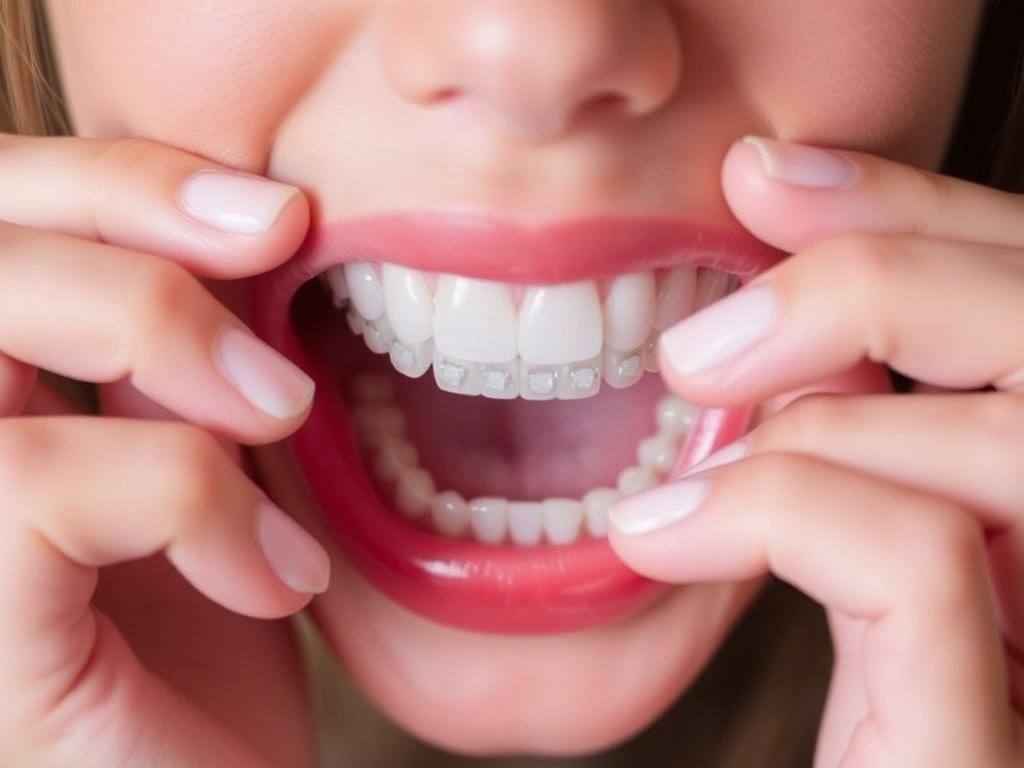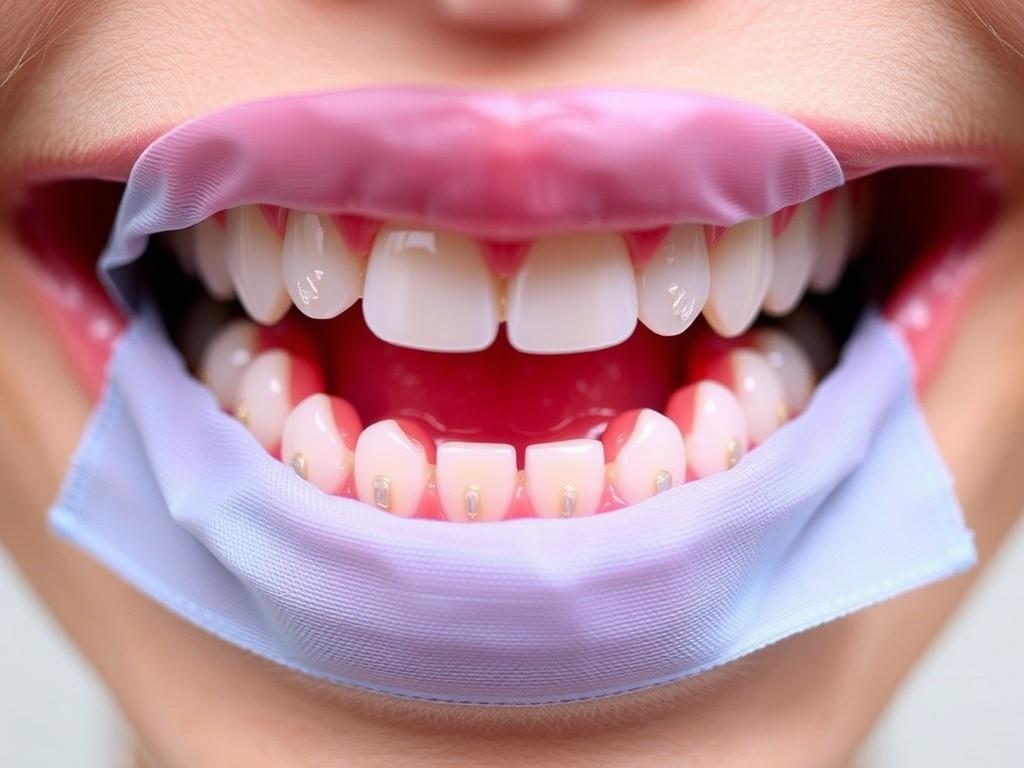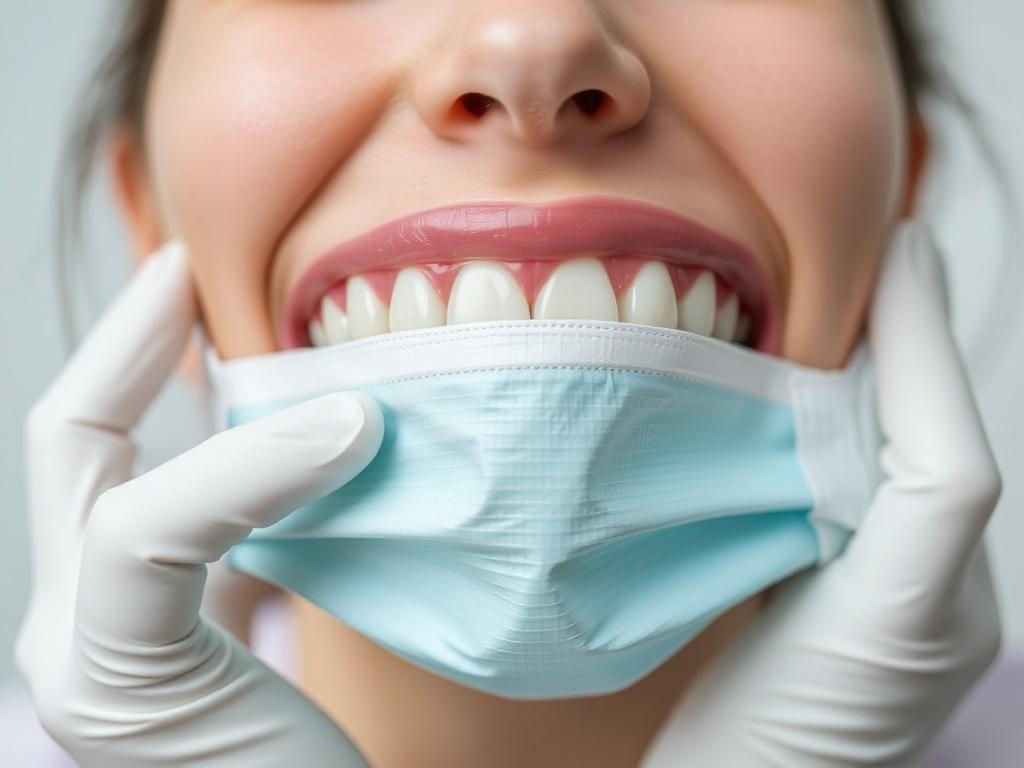Orthodontic treatment is an exciting journey toward achieving a perfect smile and improved dental health. However, anyone who’s ever worn braces knows that, along the way, orthodontic emergencies can pop up unexpectedly. Whether it’s a loose wire, a poking bracket, or sudden pain, knowing how to handle these situations calmly and effectively is essential. This guide will walk you through common orthodontic emergencies and offer practical solutions you can try at home before reaching out to your orthodontist. By understanding what to do in these moments, you’ll save yourself discomfort, protect your treatment timeline, and maintain your best smile throughout the process.
Содержание
- 1 What Constitutes an Orthodontic Emergency?
- 2 Common Orthodontic Emergencies and How to Handle Them
- 3 Foods to Avoid to Prevent Orthodontic Emergencies
- 4 Essential Orthodontic Emergency Kit: What to Keep at Home
- 5 When to Call Your Orthodontist
- 6 Preventing Orthodontic Emergencies: Best Practices
- 7 Understanding Orthodontic Wax and Its Uses
- 8 Handling Orthodontic Emergencies with Clear Aligners
- 9 Emergency Tips for Retainers
- 10 Tips for Children and Teens: Handling Orthodontic Emergencies Together
- 11 Summary Table: Orthodontic Emergencies and Quick Solutions
- 12 Conclusion
What Constitutes an Orthodontic Emergency?
When we think of emergencies, images of severe pain or injury often come to mind. However, orthodontic emergencies range from mild discomfort to more serious issues that require prompt professional attention. Essentially, an orthodontic emergency is any issue with your braces, aligners, or other orthodontic appliances that causes significant pain, damage, or hinders your treatment progress.
Here are some typical examples of orthodontic emergencies:
- Loose or broken brackets
- Protruding or poking wires
- Loss or damage of rubber bands or ligatures
- Severe pain or swelling
- Loose appliances, such as retainers or expanders
- Injuries to the mouth caused by orthodontic hardware
Understanding the nature of these emergencies will help you act appropriately and minimize damage, discomfort, or delay in your treatment.
Common Orthodontic Emergencies and How to Handle Them
Let’s explore the situations you might encounter with your braces or other orthodontic devices, along with straightforward solutions to manage these emergencies effectively.
1. Poking Wires
One of the most frequent orthodontic complaints is a wire that suddenly shifts out of place, poking or irritating the inside of your mouth. The pain can be sharp, causing ulcers or soreness on your cheeks and gums.
How to Fix Poking Wires:
— Use a clean pencil eraser or the eraser end of a pencil to gently push the wire back into place if it’s accessible.
— Apply orthodontic wax over the end of the wire to cover the sharp edge and reduce irritation.
— If the wire is painful and cannot be pushed back, try snipping the protruding section using sterilized nail clippers or tweezers, but only if you are confident and gentle.
Avoid pulling or playing with the wire excessively to prevent further damage. If the discomfort persists, schedule an appointment with your orthodontist promptly.
2. Loose or Broken Brackets
Brackets can become loose or break due to eating hard or sticky foods, trauma, or accidental biting. A loose bracket can interfere with your treatment and cause soreness.
What to Do:
— If the bracket is still attached to the wire but feels loose, leave it in place and avoid adjusting it yourself.
— Use orthodontic wax to secure the bracket and prevent it from catching on your lips or tongue.
— If the bracket has come off completely, save it and bring it to your orthodontist.
— Avoid sticky, hard, or chewy foods until your brackets are repaired.
3. Lost or Broken Rubber Bands and Ligatures
Rubber bands and ligatures are tiny, but they play a huge role in guiding your teeth into proper alignment. Losing one can slow down your treatment progress or create discomfort.
Tips for Managing this Issue:
— Try to replace the rubber band immediately if you have extra ones at home.
— Use orthodontic wax to secure any loose or sharp points until your orthodontist can assist.
— If you’re missing a rubber band or ligature and don’t have a replacement, avoid trying to fix it yourself beyond waxing and call your orthodontist for guidance.
4. Pain and Swelling
Mild pain is common after braces adjustments, but severe pain accompanied by swelling might indicate a more serious problem like an infection or injury.
How to Relieve Pain:
— Rinse your mouth with warm saltwater several times a day to reduce irritation.
— Use over-the-counter pain relievers such as ibuprofen (unless allergic or contraindicated).
— Apply orthodontic wax on any sharp brackets or wires causing irritation.
— Avoid hard or chewy foods that can worsen pain.
If swelling persists or worsens, and pain is severe, contact your orthodontist immediately.
5. Loose or Broken Appliances
Appliances like retainers, expanders, or headgear can become loose or damaged, impacting your treatment and comfort.
Steps to Take:
— Avoid wearing the broken or loose appliance until you consult your orthodontist.
— Keep the appliance safe in a case to prevent further damage or loss.
— Call your orthodontist to schedule an urgent appointment for repair or replacement.
Foods to Avoid to Prevent Orthodontic Emergencies
Preventing emergencies starts with what you eat. Hard, sticky, and chewy foods are notorious for damaging braces and appliances. Here’s a handy table to remind you what to avoid and why:
| Food Type | Examples | Reason to Avoid |
|---|---|---|
| Hard Foods | Raw carrots, nuts, popcorn, ice | Can crack or break brackets and wires |
| Sticky Foods | Chewing gum, caramel, taffy, gummy candies | Can pull off brackets and get stuck in wires |
| Chewy Foods | Bagels, tough meats, licorice | Can put excess pressure on brackets and wires |
| Crunchy Foods | Chips, hard taco shells, crusty bread | Can cause bracket loosening or wire damage |
By maintaining a braces-friendly diet, you reduce the risk of emergencies and keep your treatment on track.
Essential Orthodontic Emergency Kit: What to Keep at Home
Preparedness is key when it comes to managing orthodontic emergencies. Having a small emergency kit at home or on the go can help you tackle issues immediately. Here’s a list of essentials to include:
- Orthodontic wax – to cover irritating brackets and wires
- Small, clean nail clippers – to trim protruding wires if necessary
- Dental floss – to remove trapped food around braces
- Pencil eraser – to push back poking wires gently
- Saline solution or salt for warm rinses
- Pain relievers (e.g., ibuprofen or acetaminophen)
- Spare rubber bands or ligatures if your orthodontist provides them
- A small case or container to keep loose brackets or appliances safe
Having these items handy reduces stress and helps you manage emergencies confidently until your orthodontist can provide professional care.
When to Call Your Orthodontist
Knowing when to seek professional help is as important as knowing home remedies. In many cases, minor issues can be managed temporarily at home, but timely orthodontic intervention is critical to prevent complications.
Contact your orthodontist immediately if you experience:
- Severe pain or swelling that does not improve with home care
- A broken or loose bracket that cannot be secured with wax
- Protruding wires that cause significant injury or discomfort and cannot be pushed back
- Appliance breakage that affects fit or function
- Signs of infection such as fever, pus, or bleeding from the gums
- Lost retainers or appliances affecting your bite or alignment
Most orthodontists reserve emergency slots for urgent cases, so calling promptly ensures you get appropriate care without unnecessary delays.
Preventing Orthodontic Emergencies: Best Practices
While it’s impossible to guarantee that no emergencies will occur, several best practices significantly reduce your risks and ensure smooth orthodontic treatment.
Oral Hygiene Is Crucial
Keeping your teeth and appliances clean prevents infections and reduces discomfort. Follow a routine of brushing after every meal, flossing properly, and possibly using interdental brushes or water flossers recommended by your orthodontist.
Choose Braces-Friendly Foods
As we discussed, avoiding hard, sticky, and chewy foods protects your brackets and wires from damage. Opt for soft, nutritious foods that don’t compromise your braces.
Wear Protective Gear When Needed
If you play sports or engage in physical activities, wearing a mouthguard designed for braces is a must. This prevents trauma to your teeth and braces, reducing emergencies caused by accidents.
Regular Orthodontic Checkups
Attending all scheduled appointments enables your orthodontist to monitor progress, adjust appliances correctly, and catch small problems before they become emergencies.
Understanding Orthodontic Wax and Its Uses

Orthodontic wax is a simple yet effective tool that can save you from much discomfort during an emergency. It is soft, non-toxic, and designed to be placed on brackets or wires causing irritation. Here’s how to use it properly:
- Wash your hands thoroughly.
- Pinch off a small piece of wax about the size of a pea.
- Roll the wax into a ball and flatten it slightly.
- Place it directly over the irritating metal bracket or wire.
- Press the wax gently until it sticks in place.
The wax creates a smooth barrier between sharp metal and your soft oral tissues, providing relief until you visit your orthodontist.
Handling Orthodontic Emergencies with Clear Aligners
While braces are the most common orthodontic device, clear aligners like Invisalign have gained popularity. They can also present emergencies, such as lost trays or discomfort.
Here are some common aligner-related emergencies and solutions:
- Lost or Broken Aligners: Contact your orthodontist to get a replacement. In the meantime, wear your previous aligner or use your last set as advised.
- Sore Spots or Irritation: Use dental wax if your aligners’ edges rub against the gums or cheeks.
- Stuck or Tight Aligners: Remove aligners gently and avoid forcing them to prevent damage.
Clear aligners require careful management and regular follow-ups to keep treatment effective and comfortable.
Emergency Tips for Retainers

Retainers are essential appliances used after braces to maintain your new smile. Emergencies with retainers include breakage, warping, or loss.
If your retainer breaks or doesn’t fit anymore:
- Stop wearing the damaged retainer to avoid oral injury.
- Contact your orthodontist to arrange repairs or replacement as soon as possible.
- Keep your retainer in a safe case to prevent further damage.
- Avoid exposing your retainer to heat or harsh chemicals—these cause warping.
Timely retainer care is crucial to prevent teeth from shifting back.
Tips for Children and Teens: Handling Orthodontic Emergencies Together
Orthodontic emergencies can be stressful, especially for younger patients. Parents and caregivers play a vital role in helping children manage these situations calmly.
Here are some tips for parents to support their kids:
- Keep a well-stocked emergency kit readily available at home.
- Teach children how to use orthodontic wax and identify emergencies.
- Encourage a soft-food diet after adjustments or emergencies.
- Maintain open communication with the orthodontist for guidance or reassurance.
- Help children practice good oral hygiene to avoid complications.
Making orthodontic emergencies less scary helps kids handle their treatment experience positively.
Summary Table: Orthodontic Emergencies and Quick Solutions
| Emergency | Cause | Immediate Action | When to See Orthodontist |
|---|---|---|---|
| Poking Wire | Wire sliding out of bracket | Push back wire with eraser, apply wax | If pain or injury persists |
| Loose Bracket | Trauma, hard foods | Secure with wax, avoid chewing on that side | If bracket detaches or causes pain |
| Broken Rubber Band | Eating sticky food, wear & tear | Replace if possible, use wax for comfort | If replacement not possible |
| Severe Pain and Swelling | Infection, injury | Rinse with warm saltwater, take pain relievers | If pain or swelling worsen |
| Loose Appliance | Accidents, wear & tear | Stop using, keep in case | Immediately for repair |
Conclusion

Orthodontic emergencies can be daunting, but knowing how to manage them makes a world of difference in maintaining comfort and protecting your treatment progress. Whether you’re dealing with poking wires, loose brackets, lost rubber bands, or pain, simple solutions like orthodontic wax, gentle adjustments, and good oral hygiene can ease discomfort effectively. Preparing an emergency kit, avoiding damaging foods, and staying in close contact with your orthodontist ensure you’re ready for any mishaps along the way. Remember, your orthodontist is your partner in navigating these issues, so don’t hesitate to reach out if an emergency feels beyond what you can manage at home. With this knowledge and preparedness, you’re well on your way to enjoying a smooth, successful orthodontic journey and a radiant smile that’s worth every effort.



